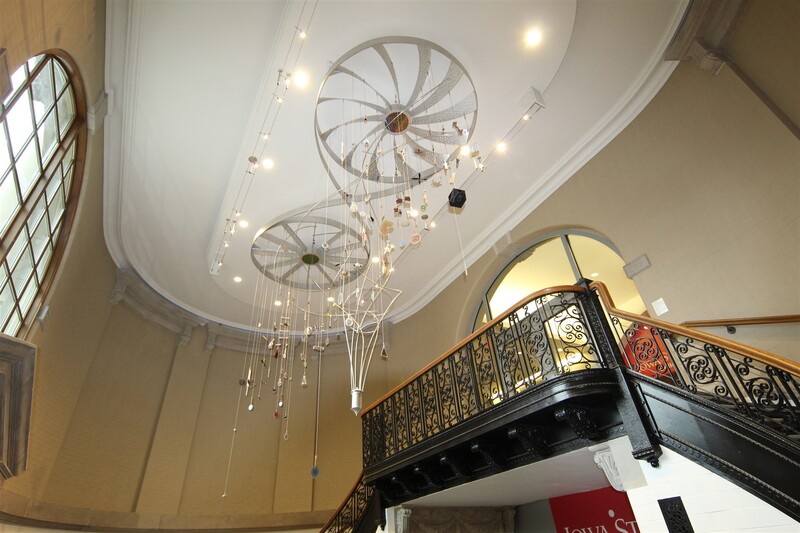
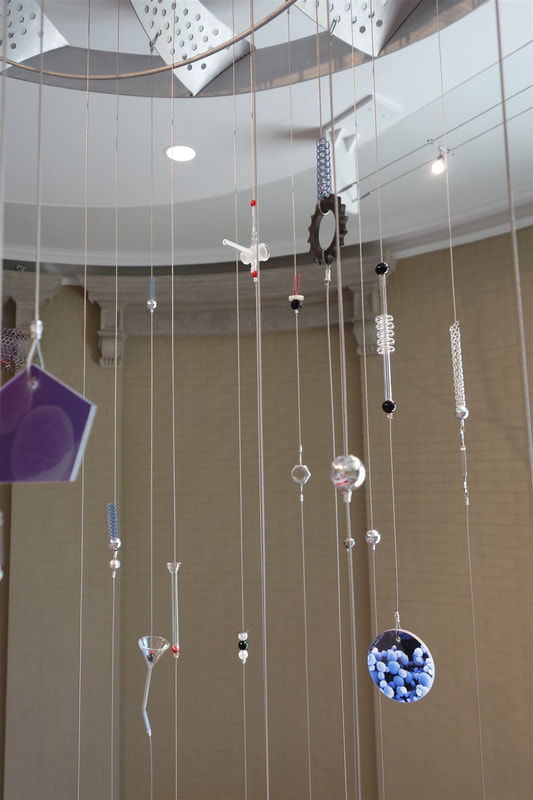
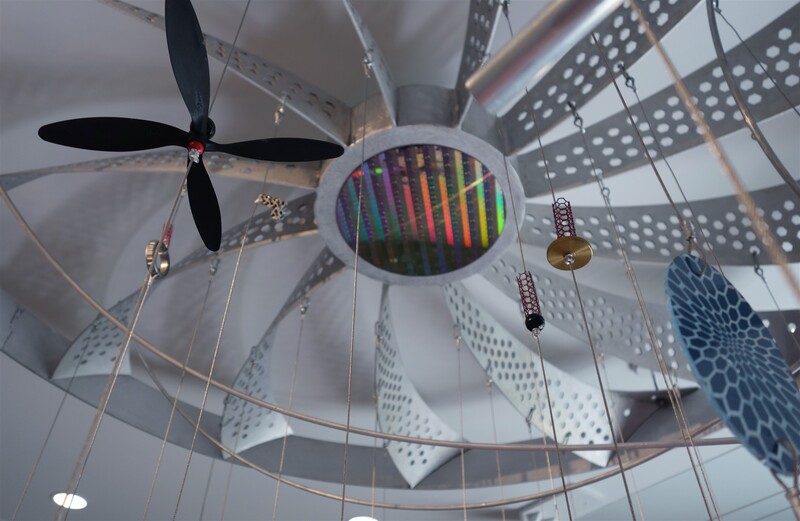
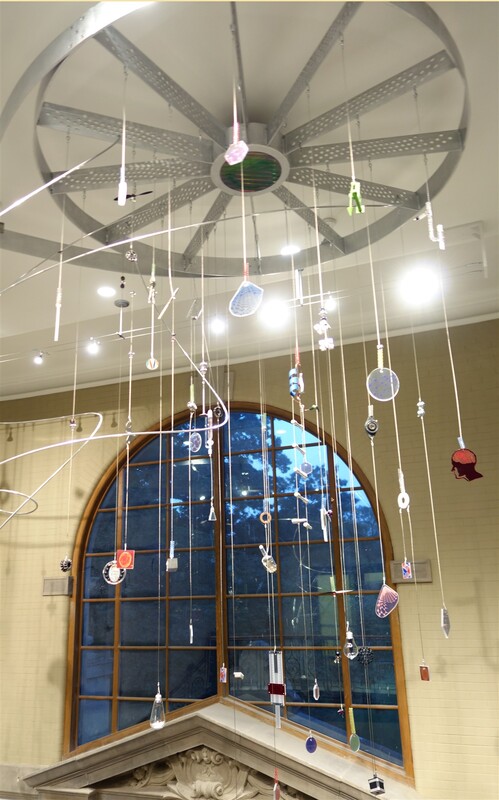
About the Art

The four Marston Muses on the façade of Marston Hall represent the departments of the College of Engineering during 1900 when the building was constructed: Mining Engineering; Civil Engineering; Physical Engineering; and Physics. The Fifth Muse investigates the evolution of Engineering from the past, to the time of the four outside muses, to the present and future..
The installation is anchored by a basic wheel, an early engineering invention, and a turbine, a more recent invention. They are connected by an infinity symbol as its main structure from which over 100 objects hang. The hanging objects evoke the intricacies, complexities, and diversity of engineering disciplines at the College of Engineering. They were developed using various manufacturing and technical labs at the University. Each object tells a story, yet relationships between the various objects also tell other open-ended narratives that become personal and universal.
About the Artist
Norie Sato is a Seattle-based artist. Born in Japan in 1949, she immigrated to the United States as a young child. She received a Bachelor of Fine Art (BFA) in Printmaking in 1971 from the University of Michigan and a Master of Fine Art (MFA) in Printmaking and Video in 1974 from the University of Washington.
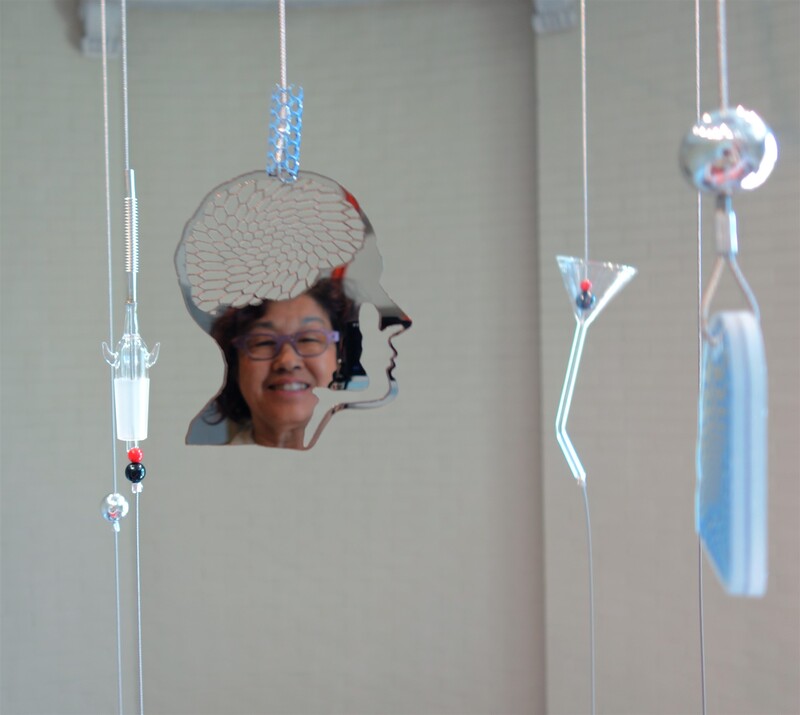
Reflection of Norie Sato in The Fifth Muse
Sato creates both studio art and installations for public places. She works from site and context-driven ideas first, then finds the appropriate form and materials, striving to add meaning and human touch to the built environment. Sato installations can be explored in universities, airports, libraries, transit stations, city halls, convention centers, and parks all over the United States. See some of her art below or e+l+e+m+e+n+t+a+l in this book.
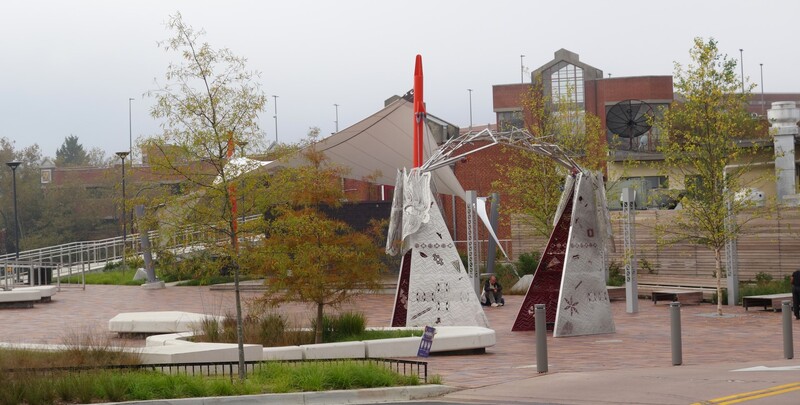
Meet Me at the Triangles, 2020, Marion Fryer Town Square, Wheaton, MD
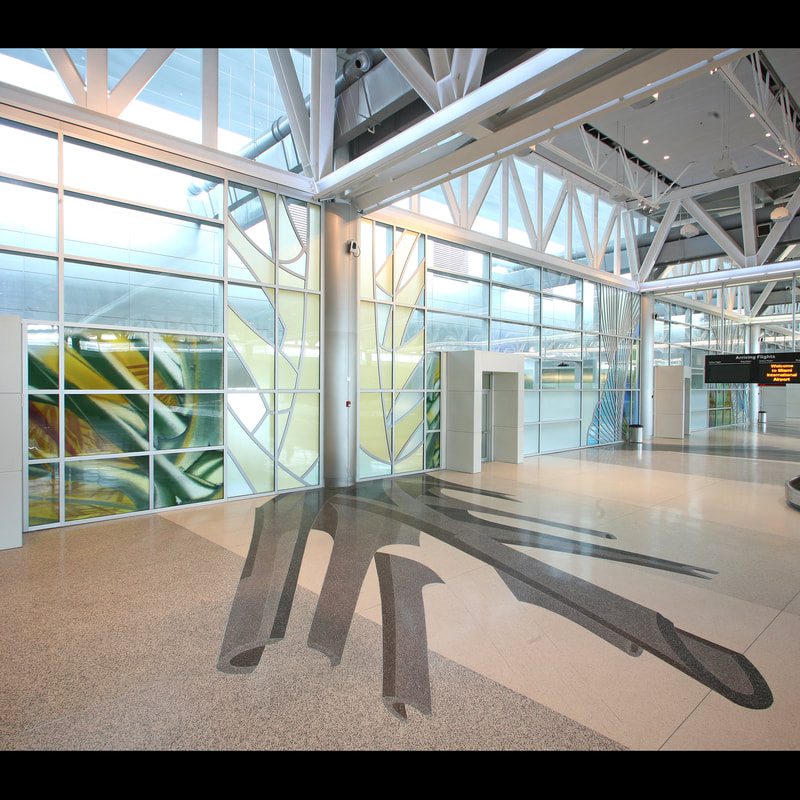
Ghost Palms, 2007, Miami International Airport, South Terminal International Baggage Claim, Miami FL
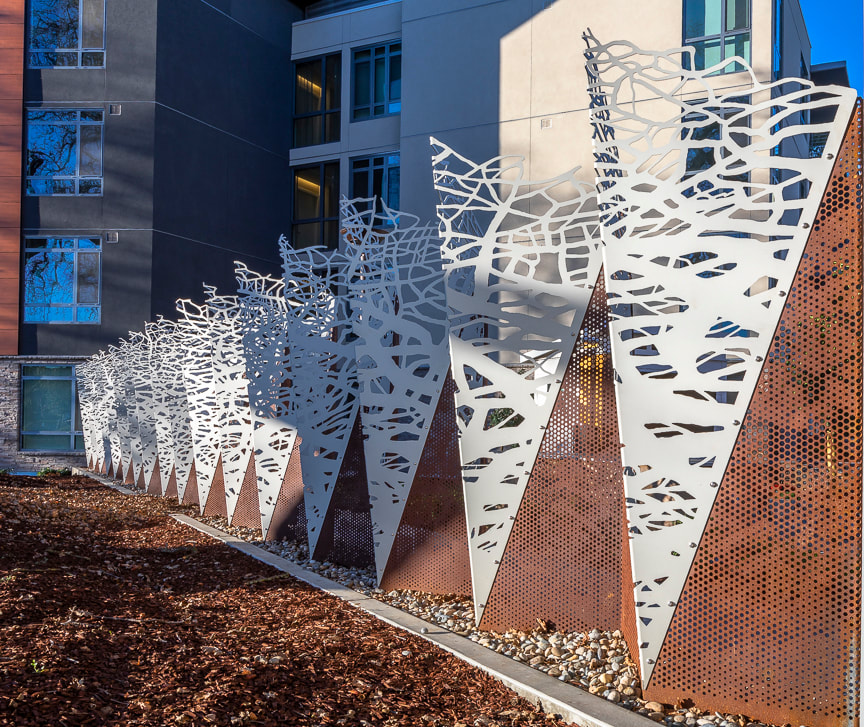
In the Fold, 2020, Viamonte Senior Living, Walnut Creek, CA
Relevant Terminology/History
A Turbine is a machine for producing continuous power in which a wheel or rotor, typically fitted with curved vanes, is made to revolve by a fast-moving flow of water, steam, gas, air, or other fluid.
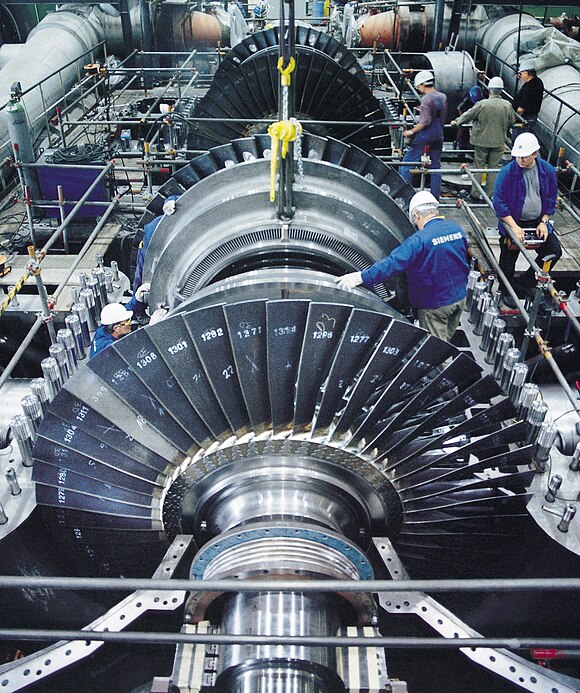
Steam turbine with the case open, image courtesy of Wikipedia
Muses in ancient Greek religion and mythology, were the inspirational goddesses and presiders over literature, science, and the arts. The nine Olympian Muses were the daughters of Zeus, king of the gods and Mnemosyne, Titan goddess of memory. Calliope; Clio; Erato; Euterpe; Melpomene; Polyhymnia; Terpsichore; Thalia; and Urania were considered the source of knowledge in poetry, lyrics, and music.
According to the Library of Congress, “although the origins of the Muse cult are obscure, these goddesses were venerated in ancient Greece as the protectors of poets, who in those days were also musicians. Later the Muses were also seen as protectors of the liberal arts and sciences, hence the word “museum,” or seat of the Muses.”
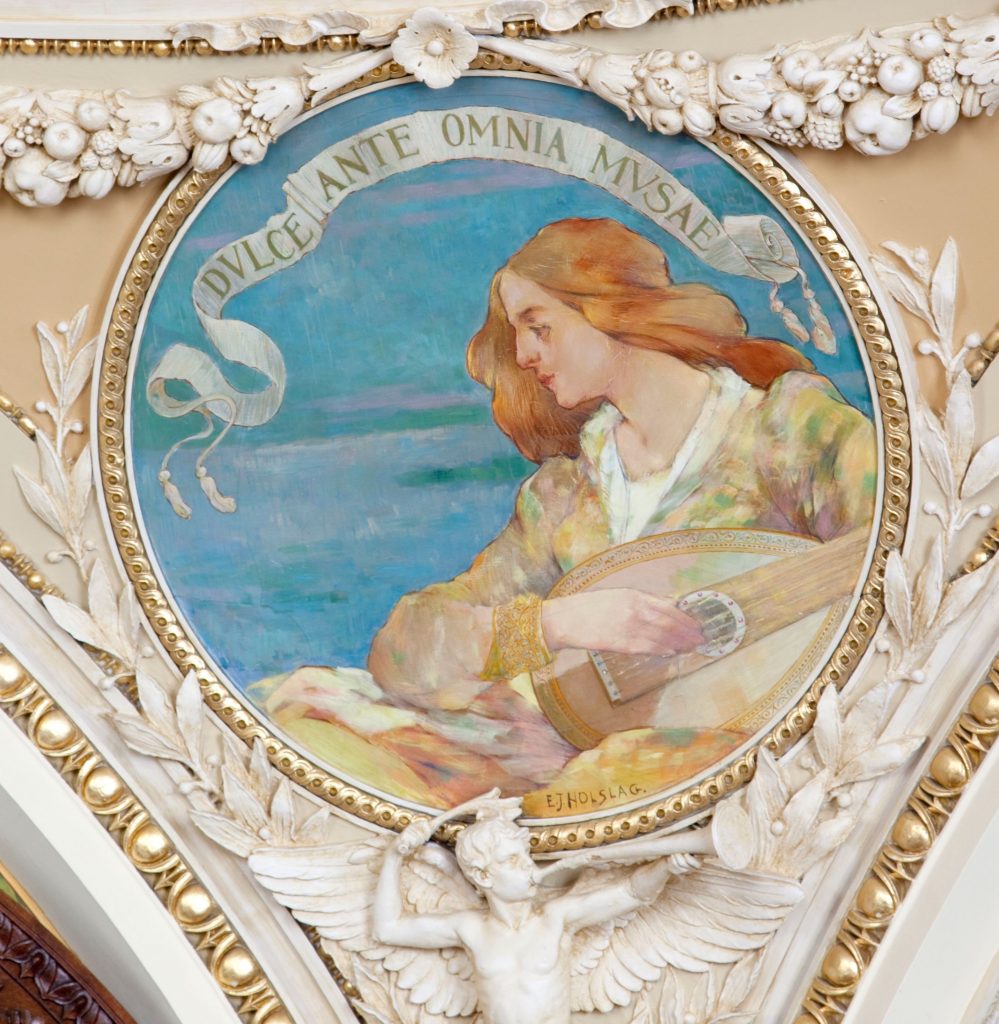
Circular mural “Muses, above all things, delightful,” in the Librarian’s Ceremonial Office. Library of Congress, Thomas Jefferson Building, Washington, D.C. Edward J. Holslag (1870-1924), artist; Carol Highsmith (1946- ), photographer.
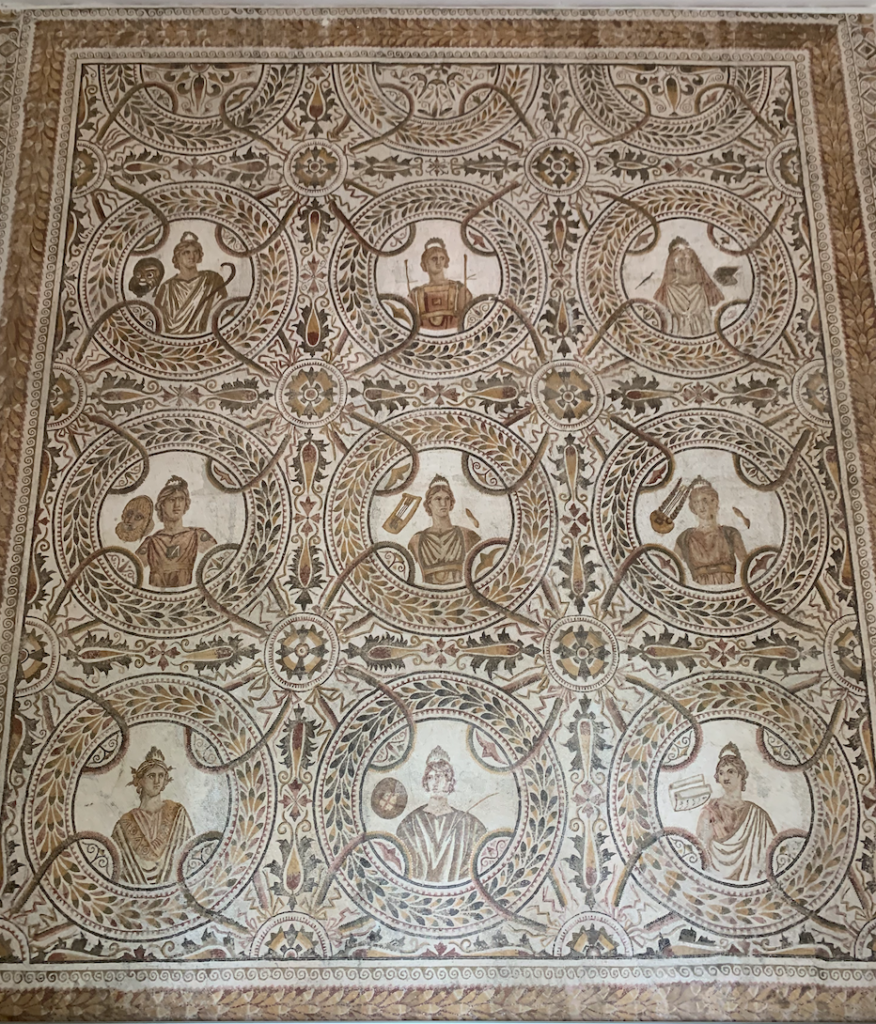
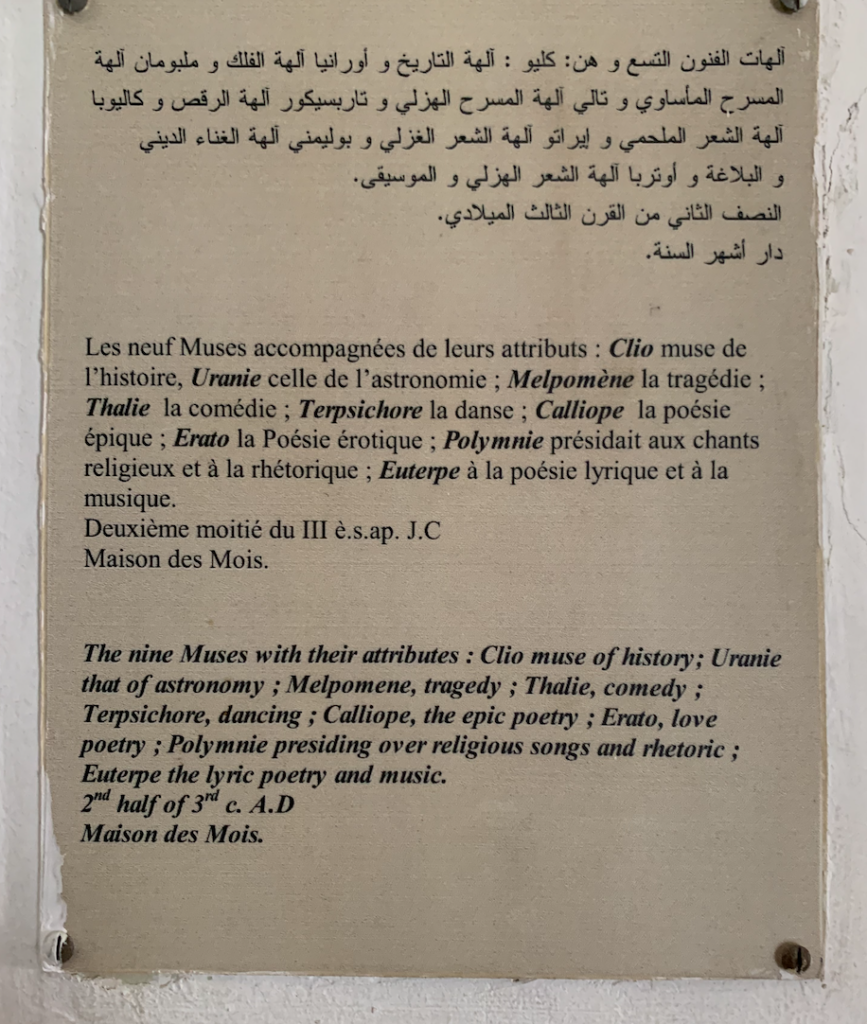
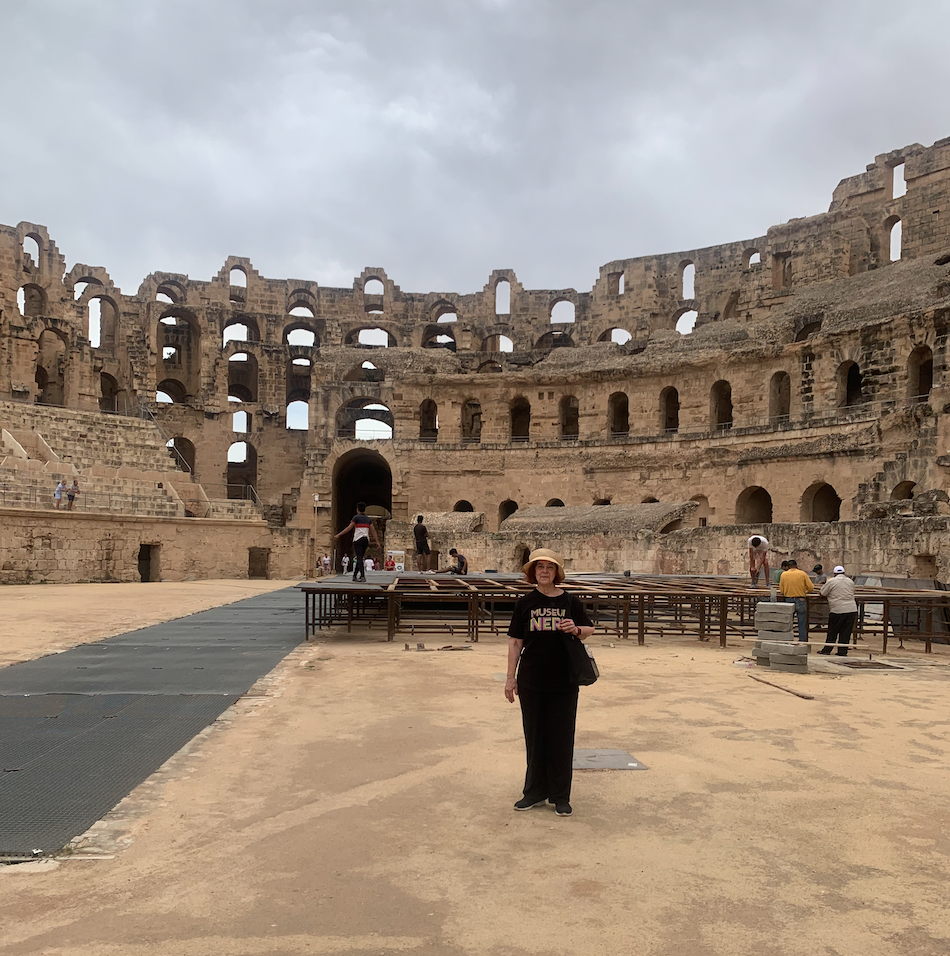
Dr. Klemm visited El Jem, Tunisia during June 2023. She photographed the Roman mosaic (approximate date of 250 CE) of the nine Greek muses and their description displayed in the El Jem Museum. See her standing in the center of the El Jem Roman Coliseum, a UNESCO site. El Jem was known as Thysdrus at the time of the Roman Empire.
Visit Ripple in this book for an introduction to ancient and modern mosaic art.
Description of the nine muses: The nine Muses with their attributes: Clio muse of history; Uranie, that of astronomy; Melpomene, tragedy; Thalie, comedy; Terpsichore, dancing; Calliope, the epic poetry; Erato, love poetry; Polymnie presiding over religious songs and rhetoric; Euterpe the lyric poetry and music. 2nd half of 3rd c. A.D Maison des Mois.
Modern Muses in figurative usage are a literal person or supernatural being that serves as a source of artistic inspiration
Marston Muses are the four muses, over 8’ tall, constructed as Greek muses, represent the departments of the college around 1900 when the building was constructed: Mining Engineering; Civil Engineering; Mechanical Engineering; and Physics.
Each muse is facing a different direction, and the hairstyles, clothing, and faces are unique. For example, there are adjustment knobs in the sextant and transit held by the Civil Engineering muse, and individual surveying pins. The Mechanical Engineering muse is holding an Edison light bulb with wiring down to the lead battery at her feet in addition to a gear and anvil.
Learn about the restoration of the Marston Muses by watching the below video.

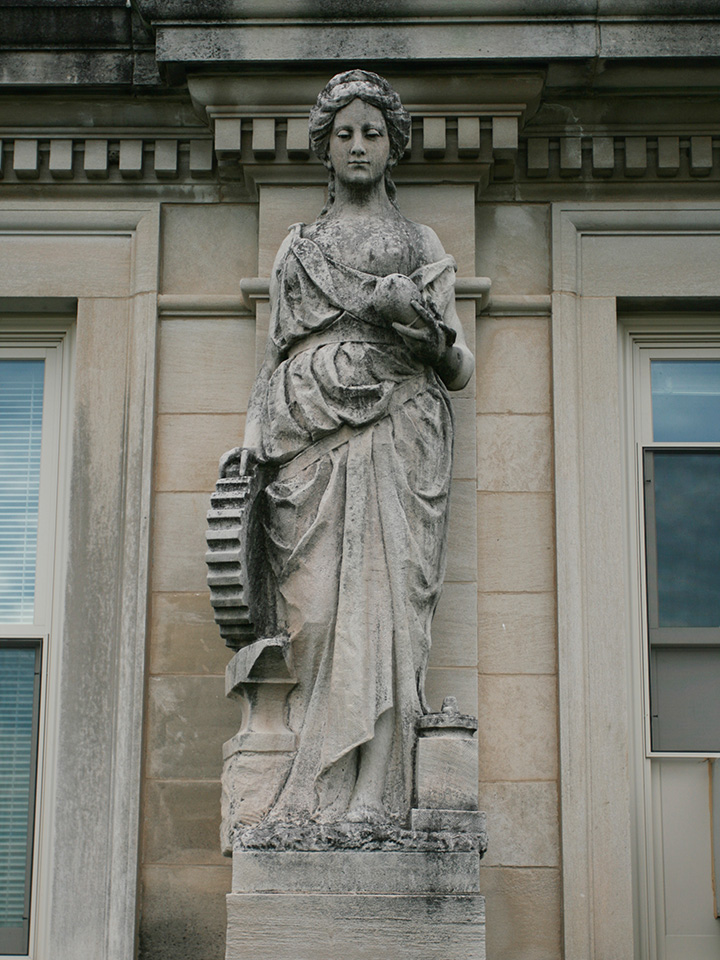
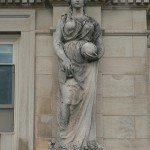
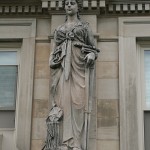
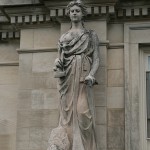
To see the muses in detail, visit the second floor of Marston Hall.
*Fun Fact: The College of Engineering at Iowa State University offers Bachelor of Science degree programs in Aerospace, Agricultural, Biosystems, Chemical, Civil, Construction, Computer, Electrical, Industrial, Materials, Mechanical, and Software Engineering.
Learning Guide

- What do you think the title has to do with the art?
- Why do you think Number Character 5 is speaking about the art?
- Why do you think STEM Squad member infinity (∞) is speaking about the art?
- Why do you think Dr. Klemm designed ∞ as silver with multi-colored eyes?
- How does the red image with white numbers relate to the art?
- How does the hidden blue image relate to the art?
- How does the design of a wheel compare to that of a turbine?
- Where have you seen a turbine? Where have you seen a wheel?
- How often do you see wheels? How often do see turbines?
- What kind of chairs are designed with five rolling wheels? Can you give a reason why they have five?
- Why do you think Norie Sato used ∞ as the main support structure?
- Why do you think a mosaic was created during the Roman era of the nine Greek muses (see photo above from El Jem, Tunisia)?
- What structures do you know of that demonstrate the engineering capabilities of ancient Greeks and Romans?
- Why do you think architects must work with engineers to build tall buildings?
- Do you know the name of the Chicago-based architecture firm that is famous for collaborating with structural engineers and expanded the use of skyscrapers—including Burj Khalifa in Dubai?
- Windows fell from the John Hancock tower in Boston. Do you think someone messed up their math? 10,334 panes of glass had to be replaced.
